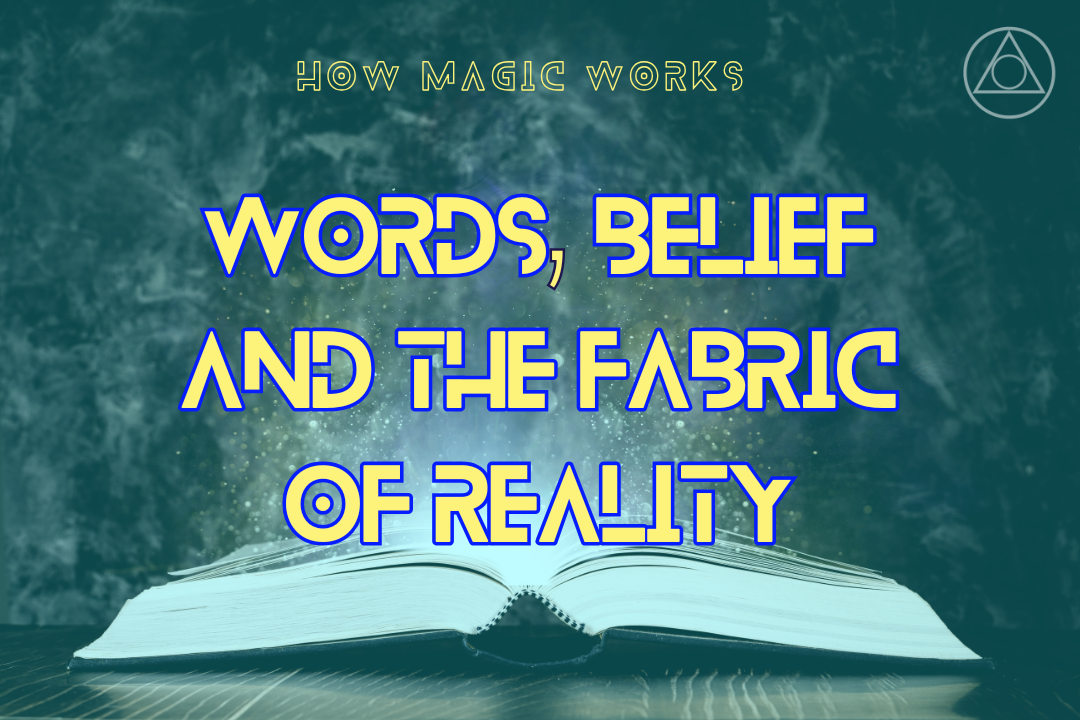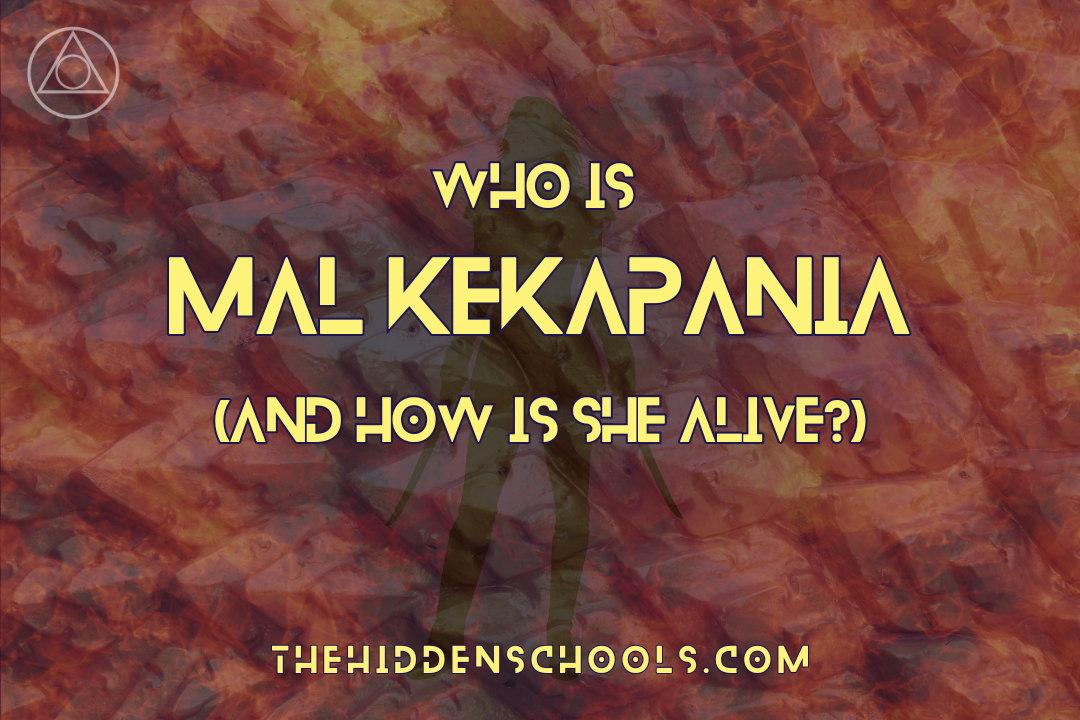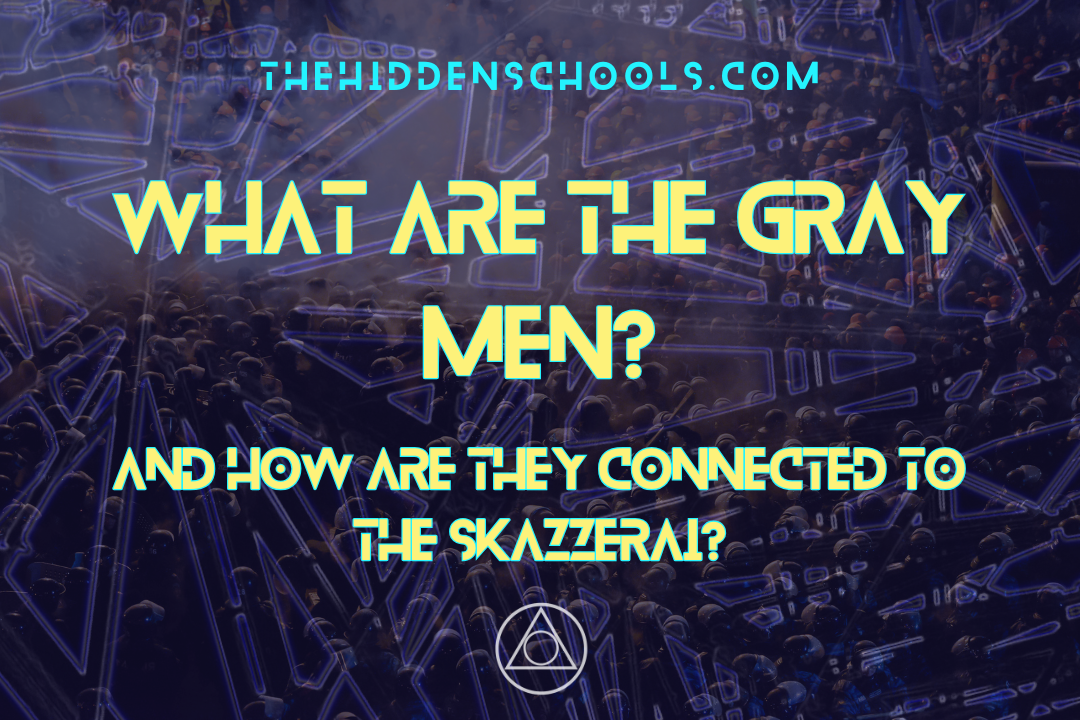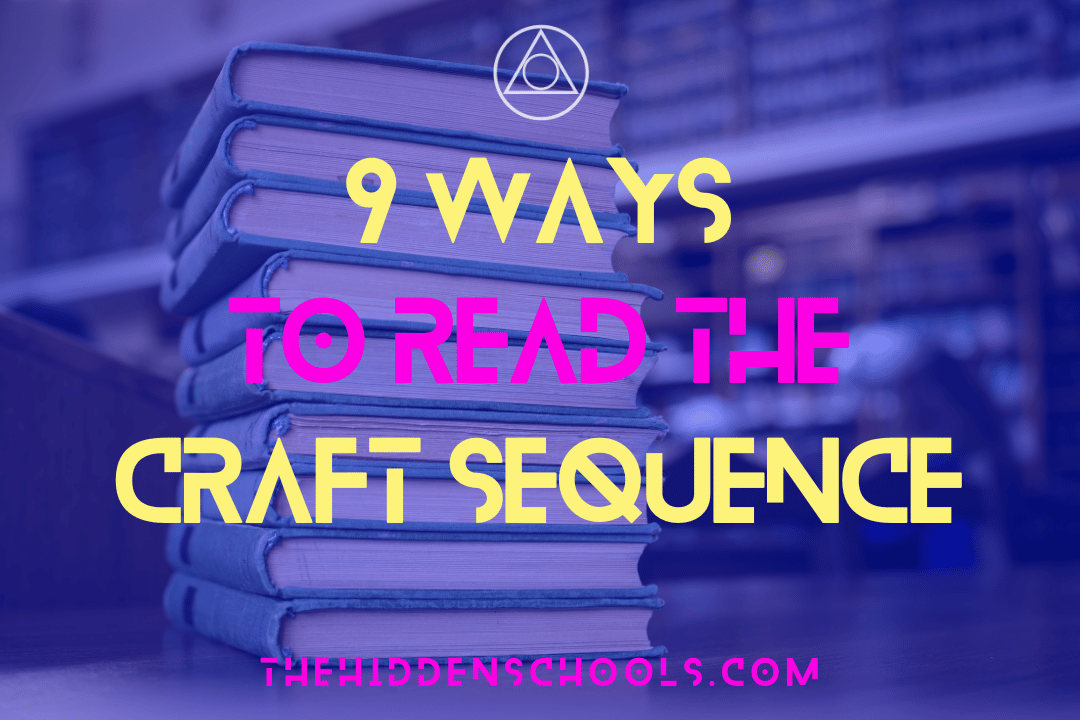Words, belief and the fabric of reality | How Magic Works in the Craft Sequence
Read part one of How Magic Works: Basics of the Craft and Applied Theology
Words and belief shape reality in the world of the Craft Sequence and underpin all magic, whether through the Craft or Applied Theology. These ideas are illustrated in different ways throughout the series and if we looked at every big moment in every book this article would be 100k words long so we’ve narrowed it down to a handful of key examples.
Note: this article contains major spoilers for all books, and assumes a basic understanding of plot and worldbuilding in the Craft Sequence.
Words and magic
“You have no power here,” Jace said. His voice quivered less than Kai expected.
Ms Kevarian cocked her head to one side. “Interesting assertion. I can speak, at least, and words have power wherever they are heard.”
Words, and the stories they tell, are integral to magic in the Craft Sequence. As Elayne Kevarian says in the quote above, words have power wherever they are heard.
It may sound like she is being figurative, as she would be in our world, but in Domain (as close to an in-world name for the world of the Craft Sequence that we have) she is being quite literal. Whilst there are many example we could give, a particularly useful one is to consider how laws work in the Craft Sequence.
When describing the Craft Sequence we often say that Craftfolk are necromancer-lawyers, but what does this mean in practice? Well, in Domain agreed laws and signed contracts have somewhat more weight than they do in our world. Through creating laws and contracts with specific phrasing, reality is directly affected.
We get an in-depth example of this in Two Serpents Rise when Mal attacks Red King Consolidated and is able to put the King in Red out of commission due to his contractual obligations to RKC.
“The King in Red’s closed himself behind a Canter’s Shell. I don’t know if he’s even still, ah—” He stopped before he said, “alive,” and considered. “Awake.”
“I expect he’s collapsed,” Mal said. “His contracts to provide water bind deep. Every faucet in Dresediel Lex, every toilet flushed or factory trying to fill its boilers, is a claim he can’t ignore. Not to mention the strain of keeping the Serpents asleep. He might as well be dad. The rest of the board, too. The more they were tied to RKC, the weaker they’ll be.”
“It doesn’t work like that. I know those contracts. There’s an escape clause, for emergencies. You don’t want the person most qualified to fix the water to collapse if it breaks.”
...
“RKC’s out of commission because it has to spend all this soulstuff keeping the Serpents asleep. That’s the problem. If we could get into the Sansilva pyramid, maybe we could break the contract binding RKC and Heartstone.”
“Won’t work. Craft is more than words on a page.”
“But words on a page are important. Without a contract, without a signature, RKC could weasel out of the deal. We might have a chance.”
“A deal’s a deal, though. Can we really just cancel the contract without Heartstone’s consent?”
“Cancel, no. But weaken, sure, enough for someone as strong as the King in Red to ignore it for a while. If Heartstone had Craftsmen and Courts on their side, nothing we do would matter, but I imagine their Craftsmen are all busy right now, and none of the Courts are open.”
Mal and Alaxic’s plan to use the Serpents rests on this contract; without it, it would be almost impossible to defeat the King in Red in his own city. But Kopil is tied by law and contract to the day-to-day running of Dresediel Lex, meaning that issues as basic as utility outages can knock him back significantly, as we saw earlier in Two Serpents Rise. Between an attack on water supplies and the way that Mal tied the Serpents to the back up water, the King in Red is weakened to the point of unconsciousness. Caleb and Teo’s (relatively successful, in the end) plan to save the day slash awaken Kopil is to rip the signature off the RKC-Heartstone merger contract. That in itself is enough to, as they say, weaken the contract enough for the King in Red to ‘ignore it for a while’.
We will look more at contracts in a future article, but relevant here is that contracts codify belief through very specific wording, and can trap people in the small print. Again, this is something that happens in the real world and the consequences are devastating to people – in the Craft Sequence, it is simply more physicalised. Which my spell check tells me is a real word, so that’s fun.
However, words don’t have to be so formalised as a contract for this idea to work, as it is so integral to the way the world works, which we see in Four Roads Cross:
“I will swear,” she said, fierce and final. “We all will swear. We will not show ourselves. We will let prayers pass unanswered, for our Lady’s safety.”
Tara felt the promise bit between them. Not so binding as a contract, since no consideration had passed, but the promise was a handle nevertheless for curses and retribution should Aev betray her word. Good enough.
…
And others, all of them, an assent in grinding chorus. Tara gathered their promises into a sheaf, and tied the sheaf through a binding glyph on her forearm.”
As Elayne said, words have power wherever they are heard.
Belief and magic
We mentioned in the last article that belief is central to Applied Theology in a way it isn’t to the Craft. Gods exist because of belief in them, evolving along with the societies that worshipped and believed in them.
“In the unrecorded mists of prehistory, when mankind prowled the savannah and the swamps, their gods hunted with them, little more than shadows on a cave wall, the gleam in a hunter’s eye, a mammoth’s death roar, primitive as the men they ruled. As men grew in size, complexity, and might, the gods grew with them.”
“Gods are stories people tell. The Hidden Schools claim gods evolved with us. We order the world in our minds, and our stories gather strength and power. Through them we become more than meat, and through us they become more than wind. Faiths are eyes through which we know the world. Gods and goddesses sing ourselves back to us through time.”
However, I’m going to slightly contradict myself from the previous article: belief is important in how the Craft works. It’s not as central as it is to Applied Theology, but it is still quite important. We see this in Last First Snow in the inciting incident to the entire story.
Elayne Kevarian has been hired to redesign pre-God Wars wards in a poor district of Dresediel Lex called the Skittersill. She has worked for months with key stakeholders represented by Tan Batac and the King in Red to draw up new contracts, and we start the book in a Craft visualisation of how they will work. Elayne demonstrates how her new wards will hold up to crises as varied as fire, plague and demon infestation.
Her suit to remake the wards is, however, denied at the last minute by the judge because it didn’t take into account another group: residents of the Skittersill who are protesting the changes.
“The protestors have no Craftsmen. What threat do they pose?”
The King in Red answered for her: “They can break the world.”
…
“Belief shapes the world. Dreams have mass.”
“Of course.”
“We want to rewrite the Skittersill—to replace the gods’ laws with our own.”
“That’s the idea.”
“But these protestors resist us. Their vision wrestles with ours, and the struggle warps and weakens reality. Things from beyond push through. The Court thinks these people are determined enough that trying to overrule their objections would tear a hole in space, and let demons in.”
…
“We don’t need to satisfy them if there’s no ‘them’ to satisfy. If these people are inconsistent—if we face not one movement but a thousands nuisances—then the Court’s power can overwhelm them all, bit by bit.”
We see, therefore, that while the Craft doesn’t require belief to work in the way that Applied Theology does, belief is still a central component. Belief shapes reality, and warring beliefs can break reality. An individual with an opposing belief holds no threat against the might of the Craft, but an organised group of protestors like those at the Skittersill do. And, though we haven’t seen the God Wars in the text, we can extrapolate how some of those battles may have gone, with opposing beliefs about reality clashing. I imagine it was something like the situation in Agdel Lex on a greater scale.
Agdel Lex, the setting for Ruin of Angels is a scarred and broken city. The old city of Alikand, where Maestre Gerhardt experimented with the Craft and ripped holes in reality, was almost entirely destroyed, kept vaguely alive because of Gerhardt’s own refusal to die. The Iskari came in to create a new city, Agdel Lex, on top of the wounds of old Alikand. But the old city seeps through, and it’s easy to fall between cities, as we see when Kai first arrives.
“The narrow alleys between those plaster houses writhed. At first she took their movement for mirage, like on the north shore rocklands back home on a hot summer day—but, no, the movement was real. Straight lines went jagged. Boulevards shrank, twisted, disappeared. Gaps opened in the city, streets bubbling into markets. Crystal and concrete towers became translucent, shrinking, uncertain, shadows of another time. Even the wind changed. First she’d felt a hot, punishing desert blast pregnant with motor oil and spent lightning, so dry it robbed breath from her lungs, but now it dampened, soothed, gained fragrances of rosewater and anise.
Two cities, then? Stacked, somehow? Fine. Kai was a priestess of many gods; she was used to overlapping realities. Back in training, the older priests had given her a glass of water and asked her to believe it was half-full and half-empty at once. That was a fun week.
But even when she tried to see both cities at once, they still refused to settle. There were further truths hidden behind that pair. She tried to hold everything at once, to see, to know.
The skyline shifted again. The squid tower disappeared altogether, and the sky where it once stood now bled sick light from a fractal wound. Wreckage spread, deep shattered chasms, broken palaces, topless towers, blasted city blocks peopled with statues of ash.
The city became a tomb. Cold wind caught Kai’s throat in a fist of knives, and squeezed. Frost spread on her skin, crackled in her mouth, and she could not breathe. The ground wheeled. The sky was sky, and overhead, and she was—
Not falling anymore. Arms held her.
…
Fontaine shoved Kai’s passport in front of her eyes. The entry stamp’s red ink seemed sharper now, the squid-in-a-circle design perfect. Squid arms formed the circle’s edge, and embraced Kai’s name.
…
“I’ve never seen someone fall through that quickly. Twilling told me it was a risk, but I had no idea. You must be very good at your job.”
“What was that?”
…
“The old city, the one that stood here before Agdel Lex, fell early in the wars. Gerhardt and his students made their first stand against the Gods here, and almost tore the world apart. Broke time itself. They say he’s still alive in that wound in the sky, still fighting. The Iskari saved what they could, sealed off the war zone, and built the city where we live. Sometimes, though, people fall through. The Rectification Authority keeps things stable, but there are holes.”
It is the strong belief of the Rectification Authority that keeps Agdel Lex stable. We later hear that the city is thicker near Rectification Authority agents (nicknamed Wreckers) to the point that the air itself changes to match their vision of the city.
When delvers like Zeddig are chased by the Wreckers, they are able to throw Wreckers of their scent (and the scent of the dead city) by focusing on Agdel Lex and its reality. Zeddig mentions reciting street names when you leave the dead city, focusing on the wide Iskari boulevards and ignoring the world you know to be right underneath them.
The entire plot of Ruin of Angels is predicated on the idea of belief shaping reality. Ley has created a means through which everyone in Agdel Lex / Alikand could see a vision of the united cities and tie it together; the Wreckers plan to use this invention to force everyone into compliance with their reality.
“Agdel Lex would be the first test: rectifying the city once and for all. They would stop its alleys from shifting, wall off the dead city and Alikand, too. They would make Agdel Lex a perfect, known place.”
“No one would go along with that. The people would reject it.”
“Fewer than you think,” Ley said. “And those who didn’t, those who turned away—the Authority wouldn’t have to protect them anymore. The Wastes would roll in. They’d fall into the dead city.”
The twin examples of the Skittersill Rising and Agdel Lex show us just how literally belief shapes reality in the world of Craft. It can break the world – or fix it, depending on your point of view.
In Last First Snow, Elayne collects the dreams of Skittersill residents to create as detailed a vision as possible of the Skittersill. One person’s vision of the areas wouldn’t suffice; other visions of reality could easily overwhelm her. But in weaving together a variety of visions, Elayne is able to (mostly) defend the Skittersill outside of Chakal Square.
One thing I particularly love about this is how it relates to the real world. There are many truths and many realities that are true to the people who hold those views, but they may be in conflict with yours. The way our society runs is largely based on the consensus belief of how it should be set up, and whoever has power in government. Look at any social changes – it would be unthinkable to a Victorian that our society would be structured and run the way it does now; and even crazier to someone from the 12th century. Go across the world to a very different country at any point in history and their base understanding of reality will be incomprehensible to you. In the Craft Sequence, this real way the world and society works is just made more physical and magical.
Words, belief, and the fabric of reality
“The world is an argument, and like any argument there are many ways to win or lose. You can force your opponent to contradict herself. You can point out her fallacies, her false dichotomies, her exaggerations and distortions of reality.”
Battles of Craft, as described by Mal in the quote above, rely in many ways on clashing visions of reality. The stronger of the visions of reality comes out on top, and requires as much consistency, evidence, and coherence as possible.
In attempting to mount a defence of Seril in Four Roads Cross, Tara helpfully explains the importance of written, specifically worded evidence of ownership (another disputable form of reality):
“I need your archive. Your old records.”
“I don’t have anything like that.”
“Impossible.”
Seril shrugged. “I was never the bookish type. I lived in shadow and claw and moonlight. My children were poets and mystics and warriors, not accountants.”
“You must have left some scripture, some trail.”
“Why would I need scripture? My children are living sermons.”
“In as you ever wanted to prove your claim to what you own.”
“If I have a thing, it is mine. What does a claim matter?”
…
“That’s the notebook I used to jot down my first experiments with Craft. Take it, if you can.”
The goddess raised one eyebrow.
The room darkened and spun. Shadows danced. The walls shook, and dust rained down.
Dust ceased to rain and shadows stilled and light returned. The notebook had not moved.
“What exactly are you trying to prove?” Seril asked.
“That book’s mine. I wrote every word myself. My name’s inked on the inside cover in my own blood, and worked in glyphs I created back when I thought I’d invented a game of catching stars and stealing souls. No one can take that book from me unless I let them, and even then there’s a limit to how much they can do with it. This book here,” she pulled a thick red-and-black tome labelled ‘Contracts’ from the shelf, “this bears my name, but only in pen, and my first name, too, and lots of people share it. Besides, there are a few thousand copied of this edition. You could lift it without much effort. And this,” she returned the textbook and selected a dog-eared Cawleigh paperback from the lowest shelf, “I got this for two thaums from a secondhand dealer dockside. You could beat me half to death with this if you wanted.”
“I’m considering it.”
“The more proof you have something’s yours, the more you control it. That’s not even Craftwork, it’s basic Applied Theology. I can’t believe you don’t know this stuff.”
“How do your cells do what they do, Tara? How to the impulses that bounce around that magnificent magic-addled hunk of ganglia atop your spine work together to be a person? What laws do they obey? Can you describe them to me?”
“You used to be bigger than justice. I want to learn what happened to all that power.”
Without written evidence of Seril’s claims in Alt Coulumb – specifically her ownership of the sky – reality can be reshaped and Seril’s power taken away from her. In this case, Seril has traditionally owned the skies over Alt Coulumb as her domain. This tradition leads to a very real rule in Alt Coulumb: no one can fly or levitate objects without Seril’s blessing. In a world where Craftsfolk regularly fly, and tend to live and work in floating skyspires, this is a major issue.
But if Tara can’t prove Seril’s ownership of the skies in a court of Craft, then reality will shift, Seril won’t have ownership over the skies, and anyone can claim them. She needs written evidence to back up this traditional belief.
“So, these poems you’ve recorded in Stone—they describe the Goddess. They’re an authoritative representation of her.”
“Strange phrasing.”
“I’m translating,” she said. “From my language to yours.”
…
“Which returns us to my question: Do we have to be this high to see the poems? I’ve seen them before, in alleys, from street level.”
“Codas,” he said. “Fragmentary mid-century additions of the minimalist school. Many of what you thought complete works were cantos of longer poems designed to be read overhead in moonlight at a particular angle.”
“If we’re meant to be viewing works in alleys from overhead,” Tara said, “we’re still too high. I can’t see any building walls from here.”
“You see nothing for which you are not prepared to look.”
Below her the city turned silver all at once.”
This facet of Four Roads Cross is particularly helpful in showing the importance of words and belief in both the Craft and Applied Theology. The two systems of magic may work differently, but they’re based on the same fundamental principles – words and belief – and specialists like Tara can translate between them.
At this point, the plan was to launch into stage three of this article: the power of stories. However we’re already at 3.5k words and this article has taken me far longer to produce than I wanted in the first place, so we’ll leave you at this for now. There are also many more examples, but this article would just turn into a copy paste of half the series if I went into each of them here. They may pop up in future entries to this series, but if there are any that stand out to you or that you would like us to delve into, let us know in the comments.
What do you think? Let me know in the comments, on r/CraftSequence and on Twitter.































